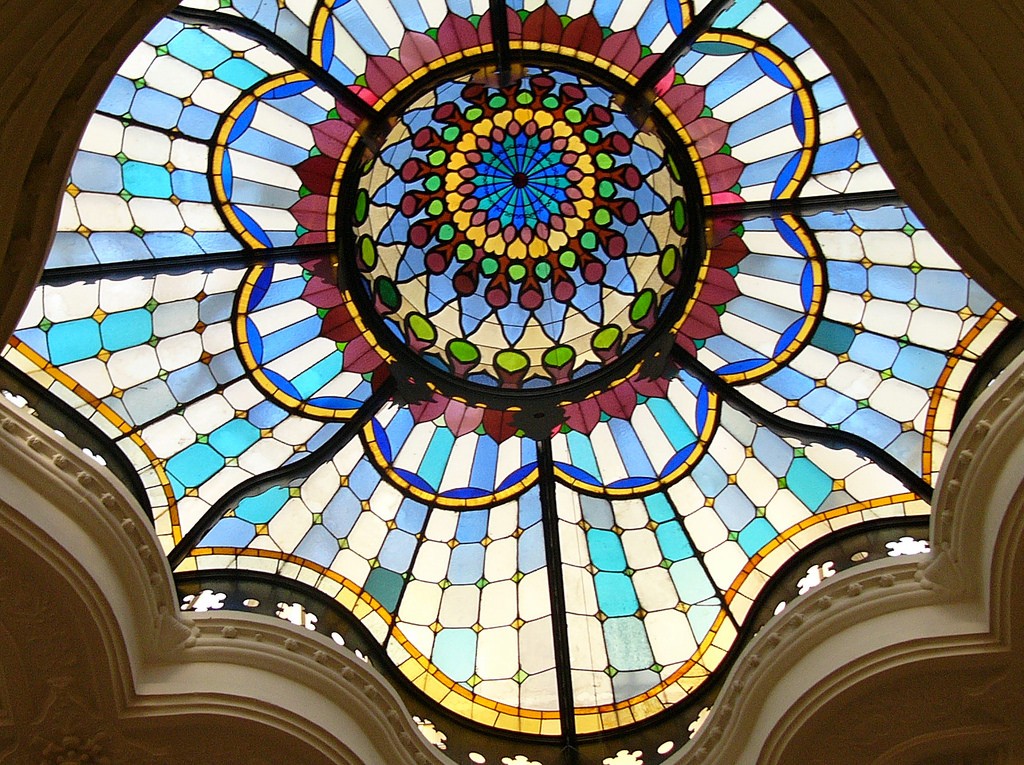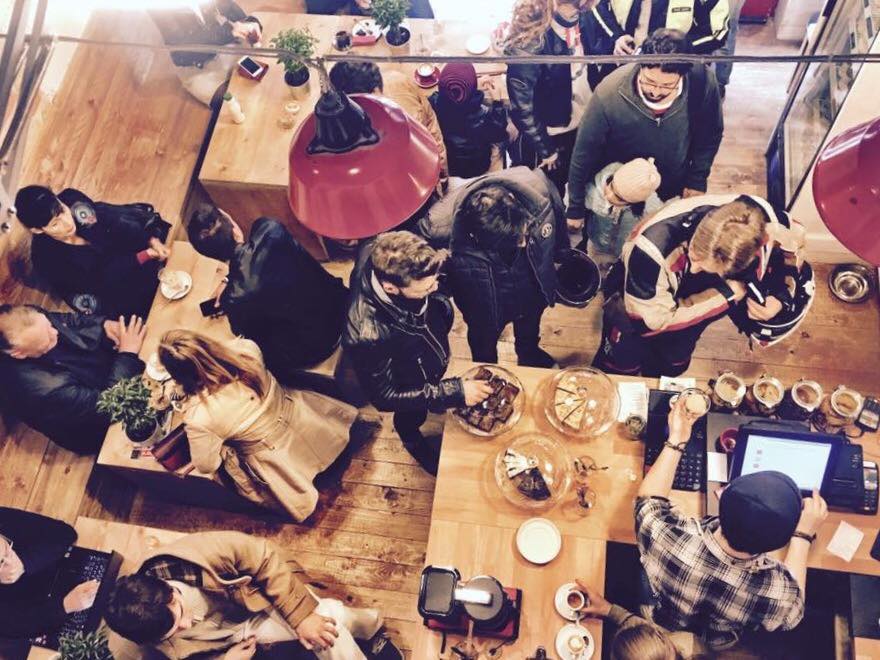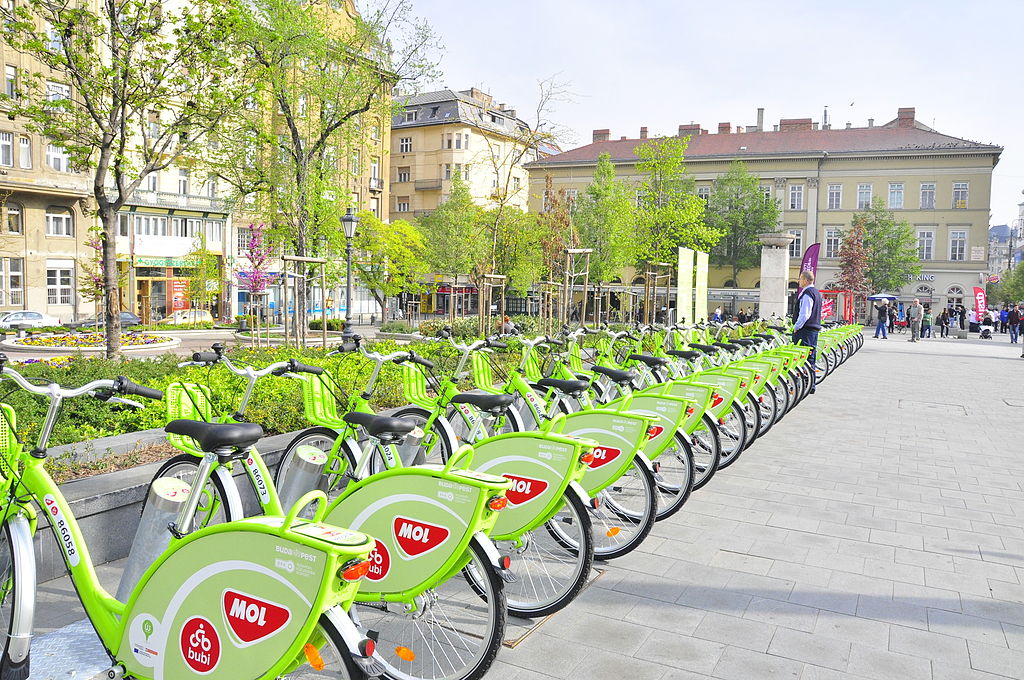Is Budapest The New Berlin?
Claire Dalgleish is a freelance writer and art curator who…
Hungary and it’s capital Budapest have a long and tumultuous history of being ruled by Monarchs and torn apart by Communists. In 1989 the country became an independent democracy and developed a revived social identity when historic sites from the former Soviet Bloc were added to the UNESCO World Heritage list.
After years of rebuilding its national identity and embracing the new and the old, Budapest is ready for its moment in the spotlight. And, as any self-respecting-Instagram-filter-at-the-ready-hipster knows, it’s because of this that Budapest is the latest in holiday must-see destinations. You’ve probably heard about the magic of the Széchenyi Baths and the famous Ruin Pubs that are scattered across District VII. But what about the vintage metro system? And the coffee? Didn’t think so — read on grasshopper. Here’s five reasons Budapest is the new Berlin.
[listicle]There’s art and culture at every turn

Forget big flashy museums with hefty entry fees. Budapest is littered with art spaces tucked away off the main drag that make discovering the creative underbelly of the city a pure joy. Creativity from private spaces spills out onto the streets with edgy street art, public sculptures, and quirky window displays.
Knoll Gallery was established in 1989 and was the first privately owned space of its kind in the Eastern Bloc, so you know, it’s kind of a big deal. The gallery is still a thriving art hub today and continues to promote contemporary Hungarian artists. Likewise, Vintage Gallery is based in an historic laboratory building and regularly displays contemporary Hungarian photography.
Photo: Kathleen Tyler Conklin/Flickr
Modern history bubbles at the surface

The city is lined with memorials that commemorate Hungary’s break for freedom and the role it plays in their contemporary social identity. Perched high on Buda side (Budapest joins two formerly separate cities: Buda and Pest, on opposite sides of the Danube), the Liberty Statue stands tall in honour of the soldiers who liberated the city at the end of the second world war while Shoes on the Danube sits along the river to commemorate the lost Hungarian-Jewish citizens.
When you’re enjoying life around the city and deciding where to get your next lángos, memorials like this can be a little tough to swallow. But then again, what makes Budapest so special is that the city’s dark moments are commemorated on the streets among its people, rather than being confined to the curated space of a museum.
Image: Budapest.com
Coffee, coffee, coffee, food, coffee

Take a stroll through the hipster neighbourhoods of Pest and you’ll be inundated with options to get your caffeine fix. Intimate cafes line the streets and hip young people spill out onto the sidewalks when the weather is warm. For a creamy cup try STIKA, and for a cup to cure any lingering homesickness head to My Little Melbourne cafe. For your foodie fix, head to the Market Hall to sample local flavours on the top floor before exploring downstairs in search of fresh produce to attempt recreate the cuisine yourself.
Image: Tamp & Pull/ Facebook
Keep it green on your bike or public transport

Forget Amsterdam or Copenhagen; with over 200 kilometres of cycling lanes, Budapest is Europe’s latest must-see-cycling city. Wide streets and long parades with bike lanes make it easy to get around the city in a short time and as a bonus, you only leave your eco-friendly footprint behind.
If you’re looking for a challenge head to the Buda side for picturesque hilly terrains, or keep it real on the Pest side where the streets are lined with clearly marked cycling lanes to make urban commuting easy. It’s hard to find an excuse not to cycle when you can rent a bike from any of the 98 docking stations parked around the city.
If cycling really isn’t your jam (no shame), take a trip on Budapest’s UNESCO listed yellow line that’s been circling the city since 1896. There’s no need to worry about your budget, as tickets are a cheap 300FT ($1.38AUD).
You can party all night and revive all day

Areas of Budapest that were once off-limits are now packed with off-beat bars, cafes, and of course, the famous ruin pubs. For a relaxed beer or cocktail head to Anker’t, where there vibe is ‘no roof, no rules’. Set in the centre of a desolate building, this pub is perfect for sunny evenings and dreamy sunsets. Later, fall down the rabbit hole at Szimpla Kert (Simple Garden) which has two floors and a beer garden filled with up-turned lampshades, lush greenery, and mad art littered across the walls. Continue the immersive experience and head to For Sale bar where you can write a note to stick on the wall like millions of people before you. This place is cosy and quirky, and you can throw your peanut shells on the floor, which is always a plus.
[related_articles]32851[/related_articles]Need to refresh the morning after? Budapest has long been hailed as the city of baths, and for good reason. The city’s famous bathing culture dates back to Roman times and today there are over 120 hot springs dotted across town. The bright yellow Széchenyi Baths are busy and famous for their bright yellow facade and flashy pools, but if you’re looking for more than the obligatory Instagrammable bath house visit, be sure to check out Budapest’s other major bath attractions. The Gellért Baths are famous for their Art Nouveau decor and boast a casual 13 pools to unwind in. If you’re looking for something a little more traditional, head to the Veli Bej Baths, Budapest’s historic Turkish bathhouse that was conceived in 1570 and still stands today, full restored and ready to rock your world.
Image: Wikipedia [/listicle]
(Lead image: Budapest Baths)
[qantas_widget code=LHR]Check out Qantas flights to London, the gateway to Europe.[/qantas_widget]
Claire Dalgleish is a freelance writer and art curator who currently lives in Sydney. She woke up like this. You can read more on her blog art/writing/projects and follow her via @art.writing.projects









